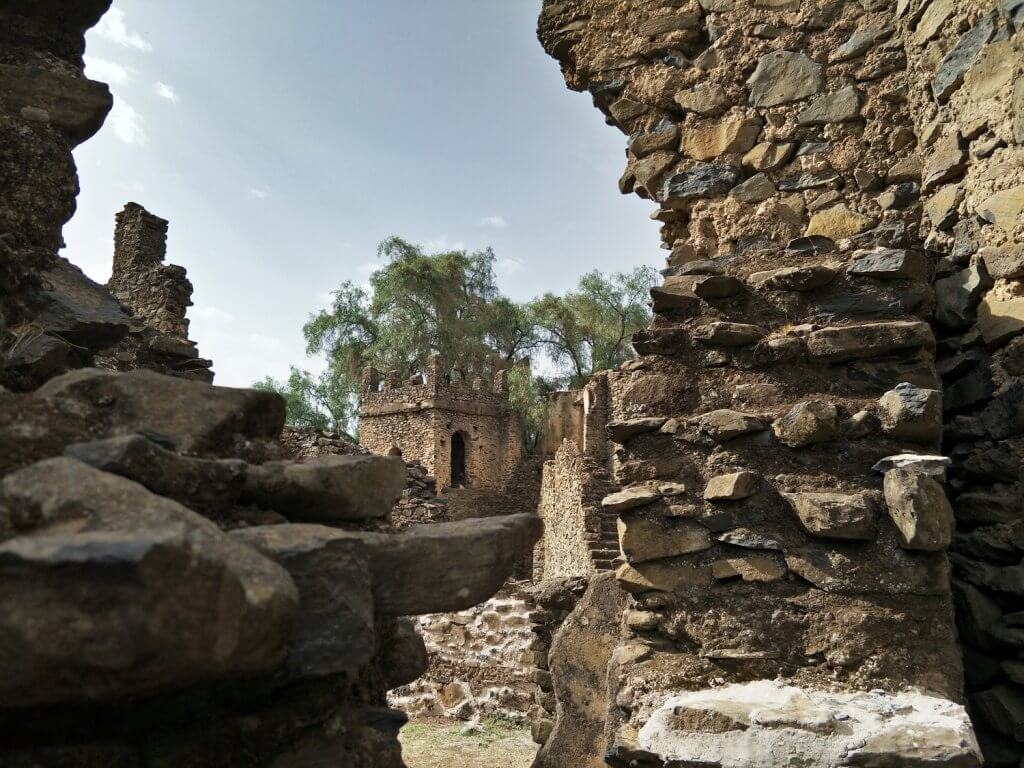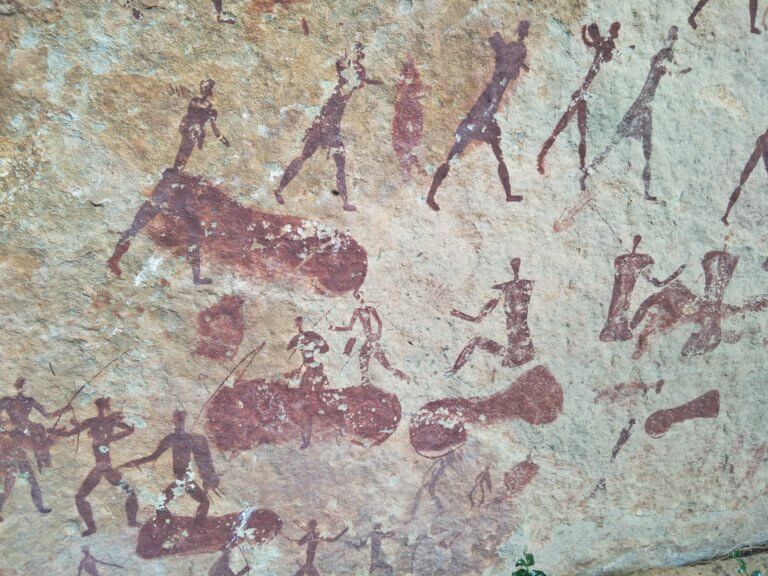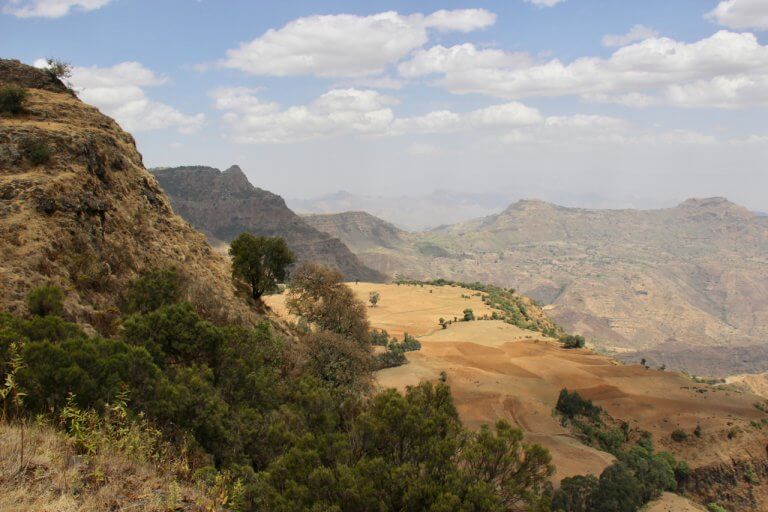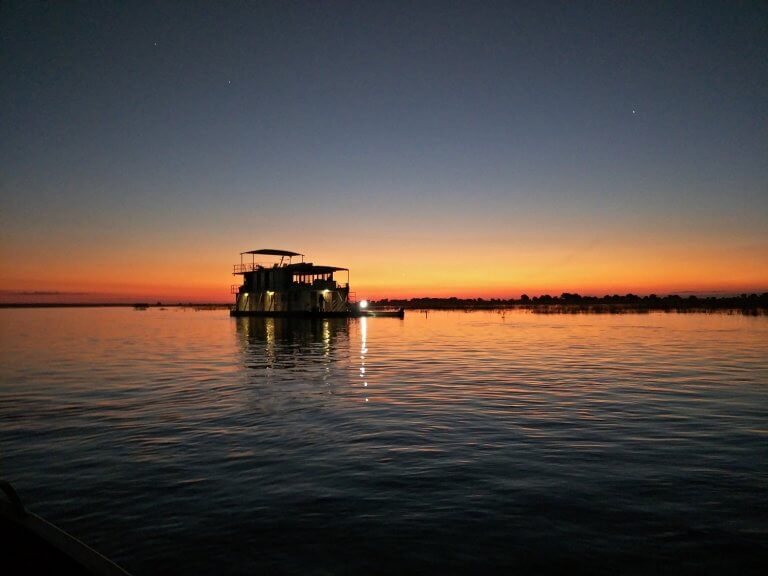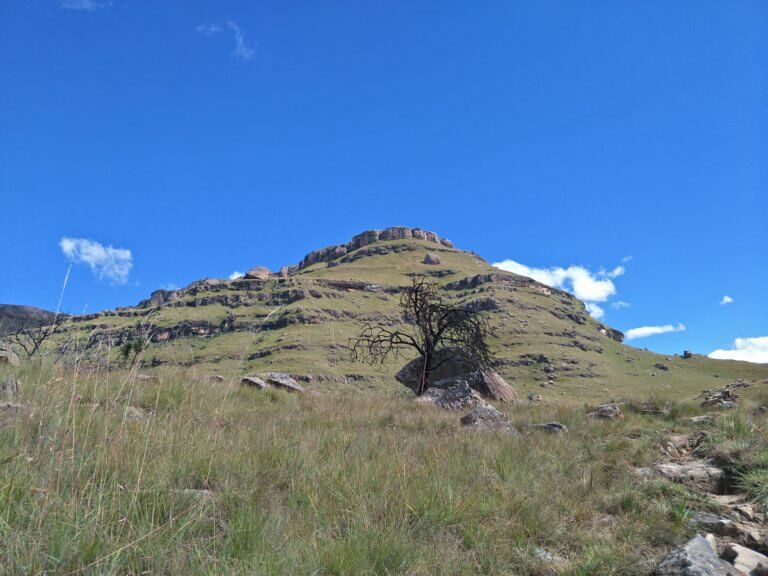Day 34 May 15 Gondar
Gondor – while Chris took a recovery afternoon. I went off with Massresha who filled my head with history and wonders of early architecture. I photographed madly and tried to install facts in my head to share with Chris later. On return I surprised myself by remembering significant chunks of the afternoons information.
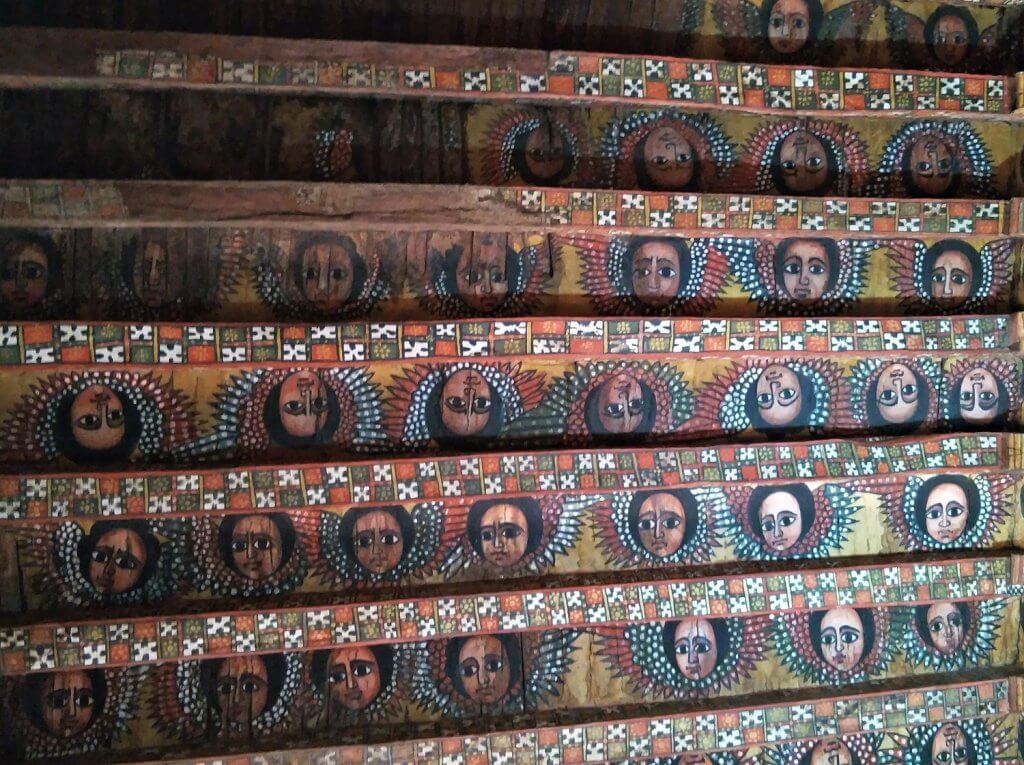
A history tour of Gondar – we began at the Debre Birhan Selassie Church, famous for its Ethiopian art particularly the ceiling covered in colourful paintings of angels heads.
Unlike the churches of Lake Tana this church was more modern European shape – oblong but keeping the three sanctums of Ethiopian Orthodox Church. As with other churches the paintings depict various stories from the Old and New testament along with stories important historically such as St George, the patron saint. As with other churches a major wall is devoted to the story of Mary. Mary is a central and important figure and is studied through the book “Miracle of Mary”.
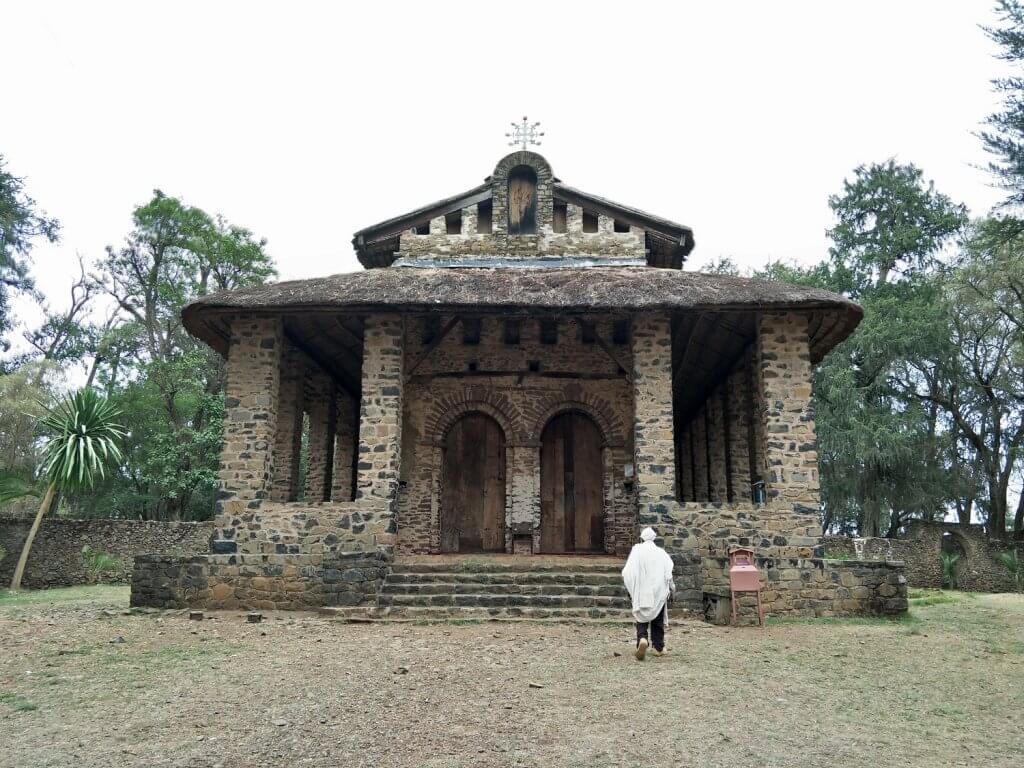
The church yard was surrounded by a stone wall, the grounds planted with aged Juniper and Olive trees. The top of the church has a traditional spire with the holy cross surrounded by 7 Ostrich eggs chosen because of their dedication to hatching, caring for and teaching their young until they are ready to fly alone.
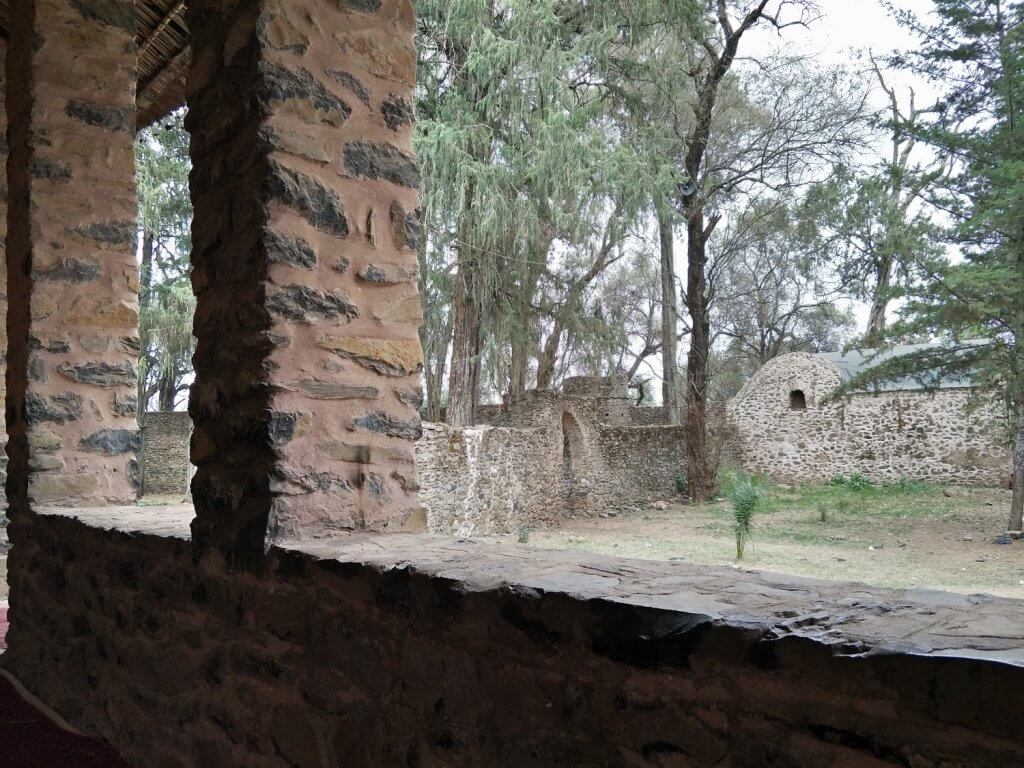
Next stop the baths where King Fasilide built a small summer castle surrounded by a baptismal pool about 2 metres in depth it is (and was) filled from the river some distance away – channelled by a drain into the pool and another drain at the other end empties the pool when needed back into the river. This is still filled each year for Epiphany and has become a pilgrimage for 1000s from around the country. The initial purpose was to baptise the many Portuguese who renounced their Catholic faith and were baptised as Christians to be able to stay in Ethiopia.
Again old Banyan and Fig trees surround the walls. The roots on one Fig tree appeared to be part of the wall – the tree is over 400 years old.
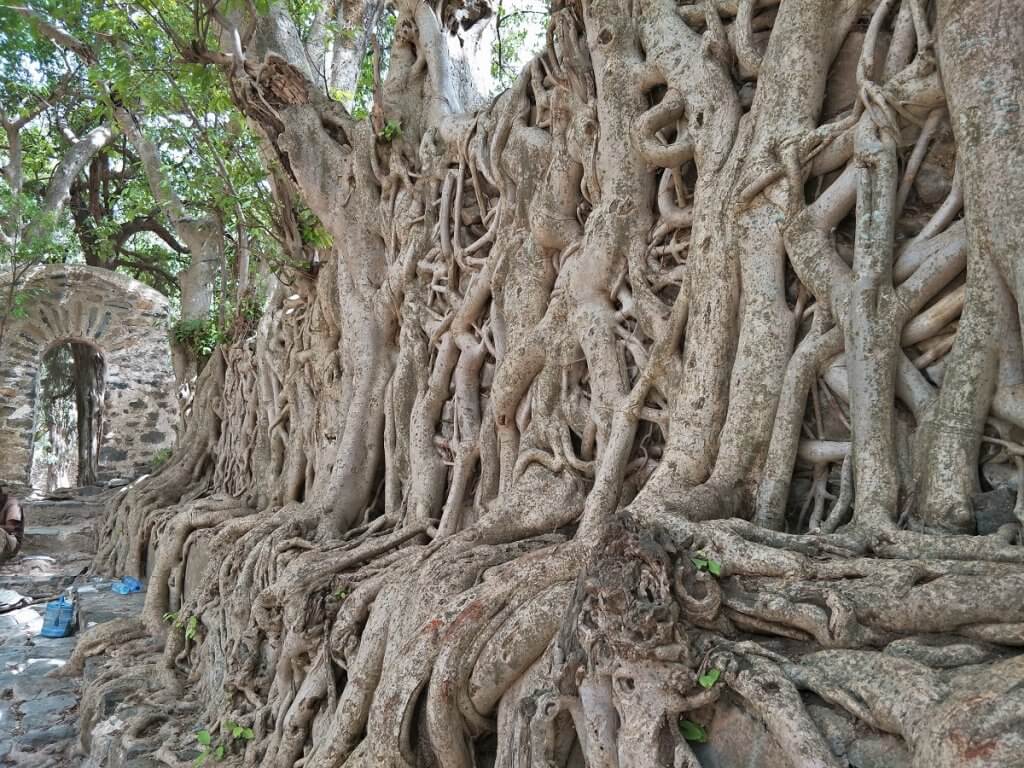
The final destination was the Castle complex close to our hotel. Castles for each reigning monarch had been built on a large area on top of the hill with excellent vision over surrounding countryside and mountain ranges encircling the town for protection.
Key fascinating points for me were:
That in the 1600s an Archive castle was built for documents, books and precious items.
The first King (Fasilid) built the largest castle with 5 towers around the perimeter correspondin to the 5 churches surrounding the castle. When busy the King could visit a tower, look at the church, say a prayer and get back to business.
The early range of influence was displayed in one hall with Portuguese decoration at one end, Indian shapes at the other and the Star of David over the door.
The Italian Fascist army used the complex as a headquarters during the Second World War – which was subsequently bombed by the British and mostly destroyed.
The Italians were ordered to repair buildings as part of reparations after the war – unfortunately not like with like – leaving concrete support structures where once was wooden beams, stone pillars where once were wooden beams, polished concrete over original walls.
The sophistication of the 1600 – 1700 buildings was surprising:
- A large water tank had been installed which was fed by water from the roof during the wet season to provide castle needs during the dry. Channels ran down the castle walls carrying water down to drains running into the stone tank.
- A sauna complete with dressing room – still holding a few of the original cow horn clothes hangers.
- A bathhouse and healing centre – used also to treat Scabies common at the time.
As part of UNESCO funding to restore the complex there are programs to employ women to teach them work skills and independence along with added household income.
A small dark windowless building had once houses the royal lions – rarely allowed into daylight with little room to move about.
The final castle was built and home to the only woman ruler in Gondar’s history. Despite much antagonism and resistance Empress Miniwab ruled for 15years and was known for her excellent administration skills, her war strategum and the first to raise gender equality as a principle.
